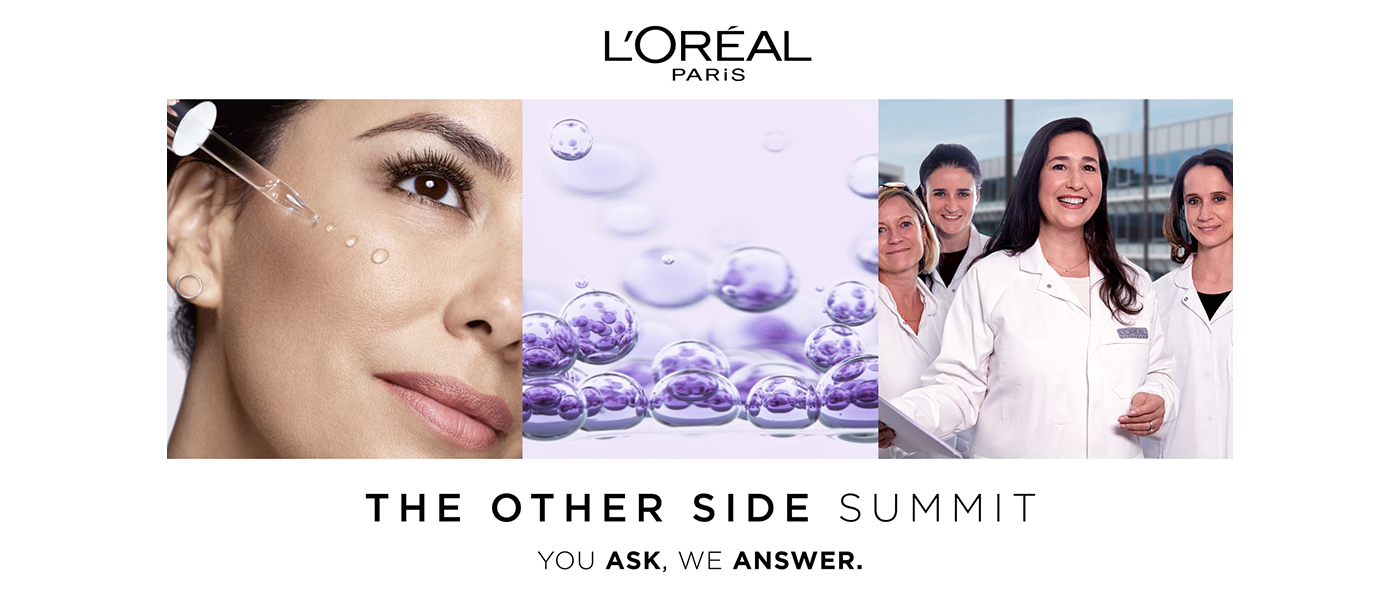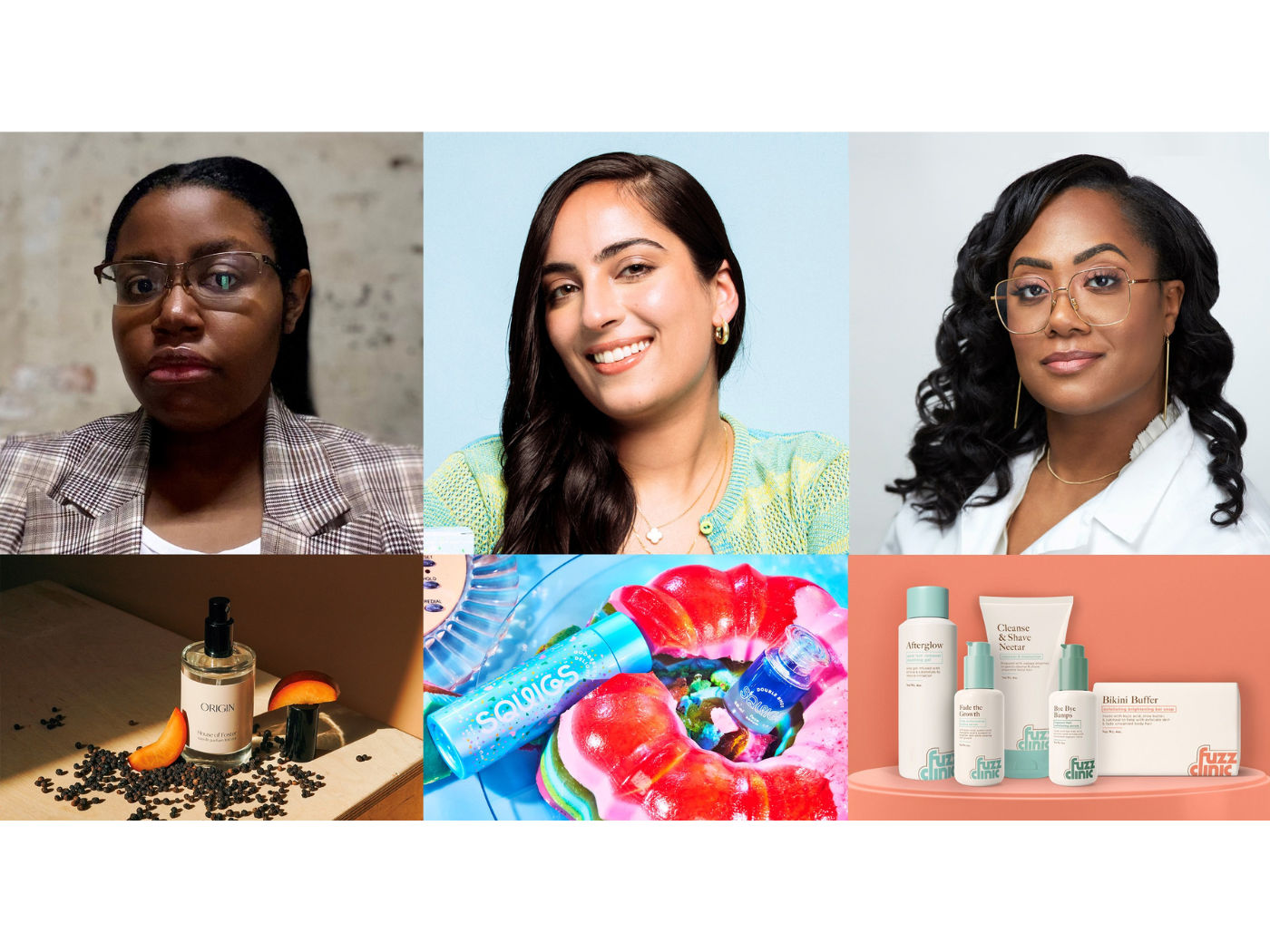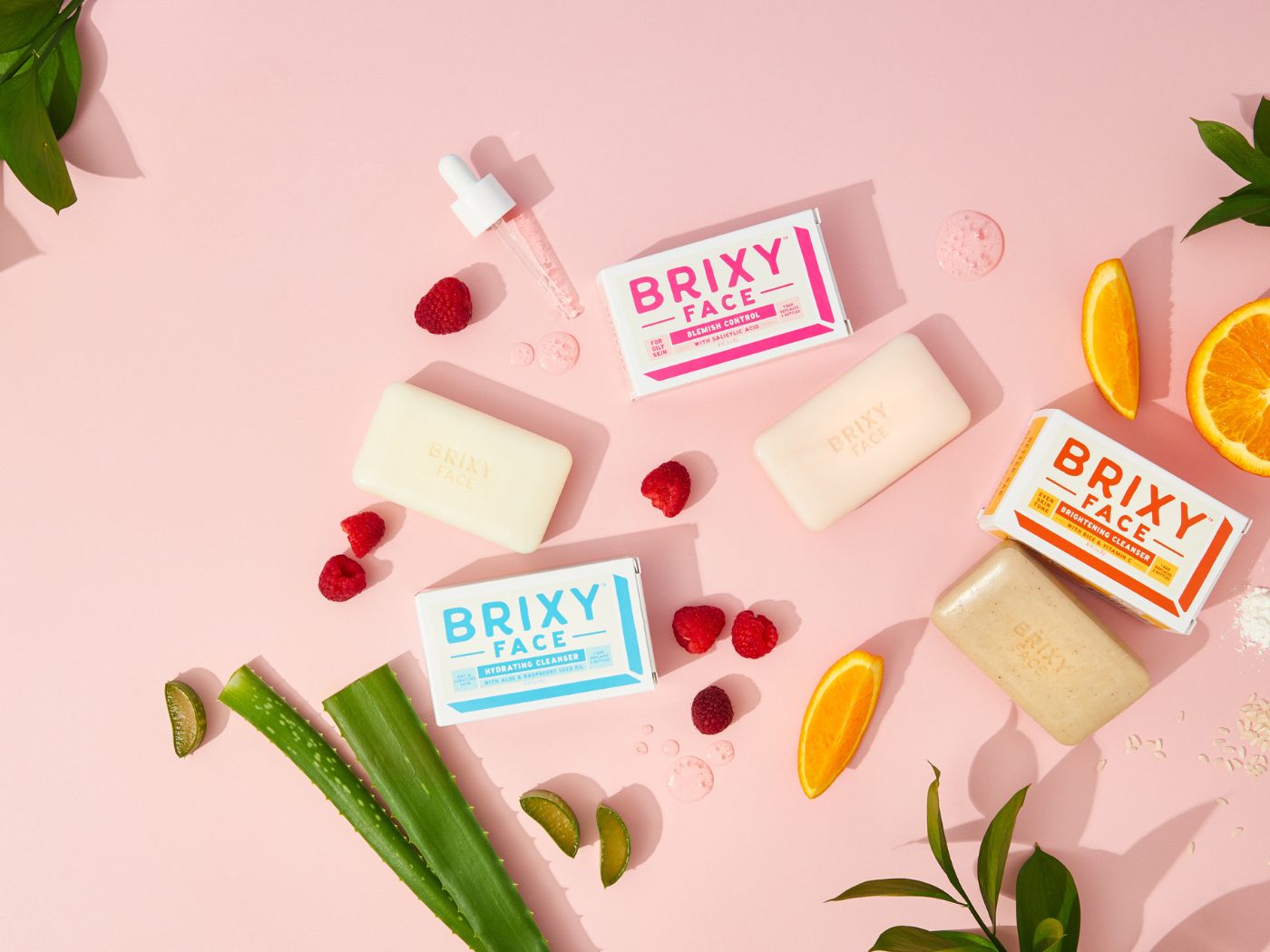L’Oréal Paris peeled back the curtain on the science behind its products in a virtual presentation on Tuesday January 11, called The Other Side Summit.
“Most women know L’Oréal Paris from the products they see on shelves or in advertising,” said Delphine Viguier-Hovasse, Global Brand President of L’Oréal Paris. “Now they can appreciate The Other Side from a superior understanding of skin biology to developing formulas based on gold-standard skin actives.”
L’Oréal’s transparency comes at a time when consumers are on a quest for more information behind ingredients in the products they’re using. A virtual tour of the labs in Paris, China, Brazil, and the U.S. provides rich content for beauty editors who can help educate consumers on selecting brands from a slew of offerings.
French model and L’Oréal Paris spokesperson Cindy Bruna kicked off the whirlwind virtual tour. “I’ve always dreamed of going behind the scenes of this incredible band. L’Oréal Paris is the number one beauty brand in the world. It is not by chance. Behind this big achievement is science—4,000 passionate scientists in 21 research centers around the world who develop the best beauty products in the world.”
Founded by a scientist more than 110 years ago, L’Oréal has always been research driven, said Elisabeth Bouhadana, Global Scientific Director at L’Oréal Paris International.
Among the highlights of the deep dive into the science of L’Oréal included:
L’Oréal’s Pioneering Science: Anne Colonna, Advanced Research Director for L’Oréal Research & Innovation discussed the company’s more than 50 years of research in reconstructive skin which aids in eliminating animal testing but also helps develop molecules for anti-aging. L’Oréal banned the practice of animal testing in labs in 1989, nearly 14 years before European regulations.
Science is also behind several anti-aging molecules developed by L’Oréal experts now powering brands including Revitalift Classic, Age Perfect and Elvive Total Repair Mask. “There are hundreds of scientists dedicated to the study of skin science which includes skin engineering, skin metabolism, skin regeneration, skin aging as well as the skin microbiome and exposome,” said Anne.
Green Sciences: In an effort to improve the sustainability of its formulas, L’Oréal Research & Innovation laboratories continuously develop new ingredients and technologies inspired by biomolecules resulting from green sciences. These innovations offer superior performance and safety consumers, while reducing environmental impact, the company said.
“Life sciences are a constant source of new, high-performance ingredients with natural origins. While developing new ingredients and drawing on innovations that have come about from natural sciences such as eco-extraction, biotechnology and agronomy, we opened up a whole new chapter in Green Sciences. It has enabled us to revisit and reinvent our portfolio of raw materials and formulations whilst the principle of circularity will help to drive future innovation,” Elisabeth explained.
One example is the Hyaluronic Acid found in L’Oréal’s Revitalift Pure HA Serum which has been sustainably produced. Lactic bacteria work as “mini fermentation factories.” Fed with locally sourced cereals before being extracted by a green process, scientists obtain two molecular weights: macro-and micro-fragmented hyaluronic acids, which are highly efficient in order to improve the penetration of moisture, the company illustrated.
L’Oréal is focused on reducing carbon emissions by 50 percent per unit by 2030. Another goal is to have 95 percent of the brand’s ingredients from renewable origins derived from abundant minerals or circular processes. By 2025 it aims to have 100 percent of its plastic placing recyclable, reusable or compostable.
Efficacy and Safety: “Safety is at the forefront of every product we launch. Each formula has been subjected to a careful selection of actives and ingredients, perfectly combined and dosed to ensure maximum safety, quality and efficacy,” said Elisabeth. “Before it reaches the store, more than 100 different experts and a series of 100 controls will have been involved in its creation,” she said of the five-step process.
L’Oréal also validates efficacy and safety through independent scientific clinical experts and relevant volunteers. L’Oréal enlists its International Board of Dermatologists to provide additional validation. There are 20 derms from across the globe on the independent advisory panel.
Putting a real-life example behind the effort, Anne cited L’Oréal’s hyaluronic acid technology that was tested with more than 15,000 applicants in three different clinical studies using several biophysical measurements. Its measurements allow for claims such as research supporting the Revitalift Filler 2.5 percent eye serum can produce results in two weeks.
The Science of Retinol, Glycolic Acid and Antioxidants: These are buzzy ingredients in skin care today. But why and how do they work? L’Oréal has the answers and exemplified why its formulas are more effective than many options.
“Based on L’Oréal research, we discovered that an innovative combination of two types of hyaluronic acid is particularly effective for plump, moisturized skin and offers a dual anti-aging action for women of all ethnicities. MACRO hyaluronic acid stays at the skin’s surface to mechanically slow down trans-epidermal water loss while MICRO hyaluronic acid penetrates into the skin and is able to activate specific receptors called CD44, which in turn stimulate the production of hyaluronic acid by our own cells,” explained Ruijun Chen, Chemist and Expert Skin Care Formulation Engineer for L’Oréal Research & Innovation in Pudong, China. The products harnessing this innovation include L’Oréal True Match Nude Plumping Serum and Revitalift 2.5 percent Eye Serum.
Moving the tour to the U.S., Rebecca Barresi, Biochemist and Senior Scientist dedicated to skin, discussed the benefits of home peels using low dosage glycolic acids. In 2003, the company started studying the benchmark molecules used in professional peeling procedures. L’Oréal was able to create a highly effective glycolic toner combining 5 percent glycolic acids with actives to make it as efficient as professional peeling procedures but with less irritation.
In Paris, Nathalie Deshayes, biologist, pollution and exposure and scientific program manager discussed the impact of stress on skin. More people, she said, are turning to oral supplements and topical solutions as remedies. The product example she cited is Age Perfect Midnight Serum which is powered by the company’s exclusive and patented Antioxidant Recovery Complex that contains Vitamin E and Neohesperidin.
Technology: L’Oréal’s research doesn’t only involve molecules. The company is fusing science with technology as it continues to elevate its use of artificial intelligence. Its Skin Genius tool continues to be upgraded to offer self-skin analysis of skin. In order to offer the best targeted advice to each user, picture analysis is based on 40 years’ worth of scientific expertise. This includes the company’s clinical Skin Atlases featuring 10,000 images of women that have been graded and co-validated by worldwide dermatologists.
L’Oréal said Skin Genius now offers a reliability rate that matches dermatologists’ diagnostics by 95 percent. L’Oréal also has a Virtual Try-On Tool for makeup and hair color that continues to offer customers ways to test out products from their homes.
“A commitment to a more sustainable future with partnerships that help our community and the world around them, lies a real desire to be more transparent with our consumers,” said Delphine. “Because when we say, ‘You’re Worth It,’ we really mean it.”’




